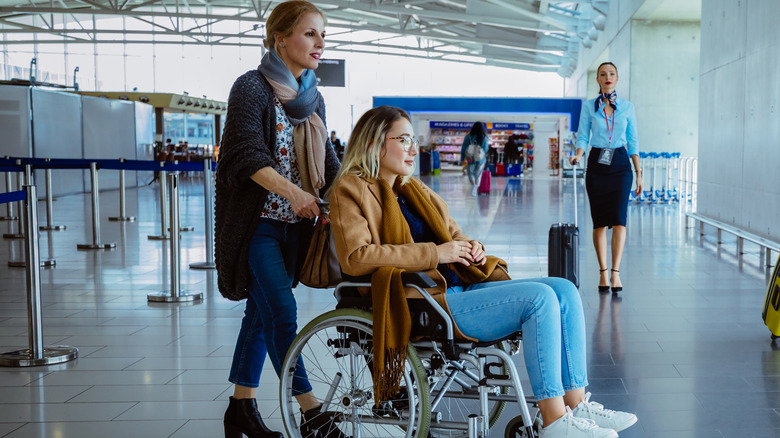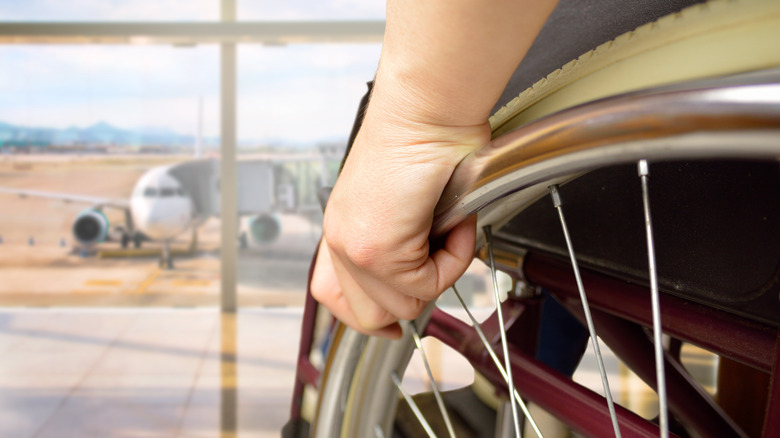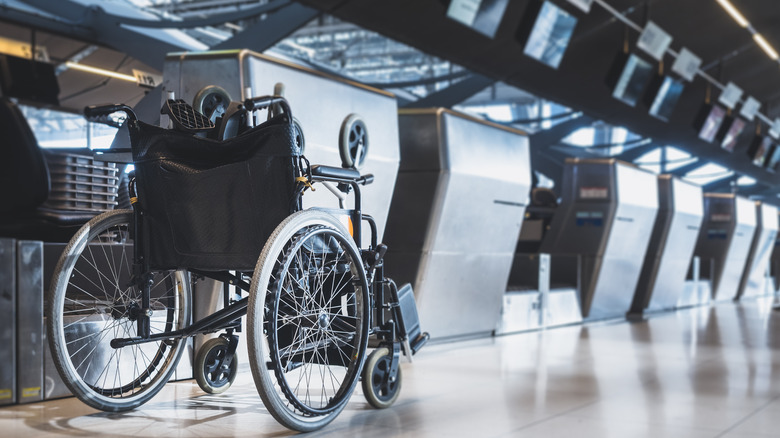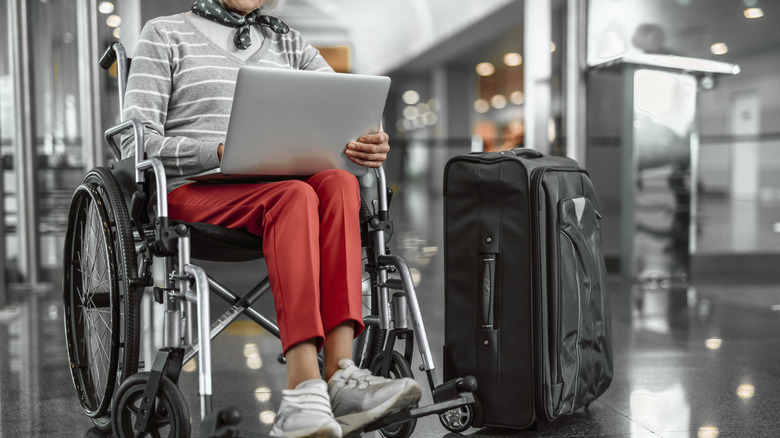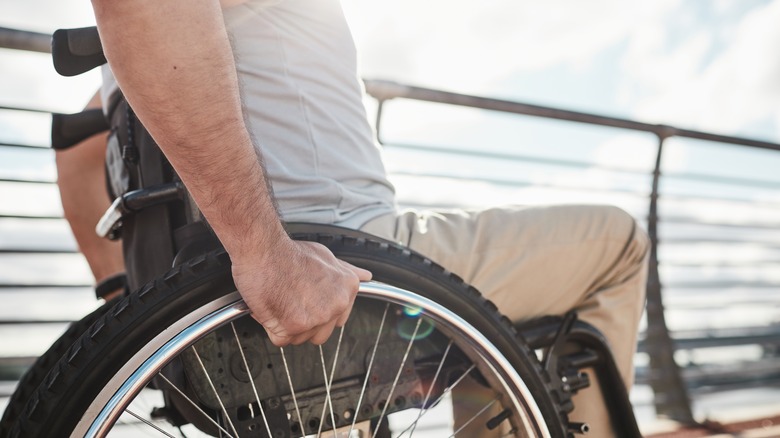What To Do When An Airline Damages Your Wheelchair
Time and time again, we see how severe the consequences can be that result from the careless treatment of disabled people and their mobility devices. Wheelchair users who experience a damaged device are often prevented from enjoying their vacation or being able to peacefully return home. Additionally, it's a major financial burden as these devices often don't come cheap.
Unfortunately, air travel with a mobility device can be anxiety-inducing for travelers as the devices can be damaged in transit. Some airlines handle it better than others, but often, the wheelchair user is left without a way to easily get around and may have to use a device not suited to their needs. This is why it's more important than ever for you to know your rights and what you can do in the event your wheelchair is damaged by an airline. In this guide, we'll cover what you need to know, from the types of devices you can bring to what you can do to prevent damage before it happens.
Types of mobility devices you can bring on an airplane
There are many assistive devices allowed on an airplane without much fuss, such as canes, walkers, crutches, braces, and prosthetics. As long as they can fit under the seat, in the overhead compartment, or in a designated storage area, it's generally not an issue. However, when it comes to seated mobility devices, it gets a bit more complicated.
For the most part, you can bring a manual wheelchair with you through security to your gate. You just may not be able to take it with you into the cabin and instead, it will be stored in cargo. For electric-powered wheelchairs and scooters, you'll have to do a bit more preparation.
With these devices, you need to find out what kind of battery you have. Spillable batteries are permitted as long as they remain attached to the device and will remain upright when stowed. Non-spillable batteries might require additional prep depending on the battery type. However, the final decision on whether or not you can bring an electric wheelchair or scooter through security is up to TSA agents. You should also contact your airline in advance to inform them about your device and find out what both they and you might need to do to safely store the device.
How to prevent damage to your wheelchair
Airlines are required to accommodate at least one collapsible wheelchair in a cabin storage compartment. If you can, ask to have your device brought on board with you. Most often, a wheelchair is damaged when it's placed in cargo due to improper handling and storage.
If someone has already reserved a spot in the storage compartment for their mobility device, you'll need to hand it over to be stored below. If this happens, be sure to remove any pieces from your wheelchair that could be broken off or lost below, such as cushions, trays, foot and armrests, or any other removable items. You will have to carry these items with you.
For an electric wheelchairs or scooter, you'll need to attach instructions on how to turn it on and off, set it to manual push mode, collapse the back of the seat (if possible), and the proper way to lift it to avoid damaging non-load bearing parts. It helps to talk to the agent at your gate and the baggage handlers if possible to communicate this information, but you won't have this opportunity with the staff at your arrival airport. As such, this is why writing down all this information is so crucial.
Address any damage immediately
You can do everything right. You can go down your checklist and tick all the boxes. But all it takes is one careless person to cause damage to your mobility device. Thanks to a spate of Federal Aviation Authority (FAA) and Department of Transportation (DOT) regulations and viral mishaps aired on social media, airlines try to take much better care of devices than they used to previously, with only 2% of wheelchairs experiencing damage in December 2018, according to Wheelchair Travel. While we wished this had developed out of the goodness of their hearts and equal care for all their passengers, rather than a concern for their bottom line, we'll take what we can get.
When you get your wheelchair or scooter back, do a thorough inspection to make sure everything is in place and working properly. As soon as you spot damage to your device, inform your airline's baggage office. We're talking before you even leave the airport. You want to be sure that the airline is informed immediately so there is no question about where and when the damage occurred.
What are your rights when your wheelchair gets damaged?
The U.S. Department of Transportation (DOT) requires U.S. airlines to pay for 100% of the repair or replacement costs and also loan you a wheelchair until your wheelchair is repaired or the new one arrives. If you do not want to rely on the airline to take care of the repairs or the replacement of your device, you can also request that they make a direct payment. If they refuse, you can report this to the DOT.
Passengers whose mobility devices experience damage overseas in the European Union are also due compensation. Unfortunately, European airlines are only required to pay up to €1,400 (or £1,200), according to Simple Flying. However, many airlines voluntarily cover the entire cost for repairs or replacement when requested. If they refuse to pay anything, you can file a complaint with the transportation authority in that country.
Damaged wheelchairs affect passengers and airlines alike
While the Department of Transportation (DOT) reports that only around 2% of wheelchairs experience damage or destruction, that still comes out to about 28 damaged wheelchairs per day, as Simple Flying points out. That's 28 people who will likely need to go without their mobility devices — which are often customized to their body structure and mobility needs — for some indeterminate amount of days, weeks, or even months.
This can lead to an understandable level of distress for wheelchair users as many consider wheelchairs to be extensions of their own bodies, and users can be left feeling powerless to do anything when their wheelchairs are damaged. Not to mention the fact that travel plans must be radically changed or canceled.
Damaged wheelchairs are not good for the airline, either. With regard to the financial impact of damaging a wheelchair, a spokesperson from Delta told Wheelchair Travel, "[T]he damage to our brand is far more costly than any expense involving the repair of a chair. What people think of Delta as a high-quality airline is everything."
So there you have it. For airlines to do better, they must be held to a higher standard. If it takes a PR you-know-what storm to improve the quality of travel for disabled passengers, you're probably within your rights to make yourself heard.
